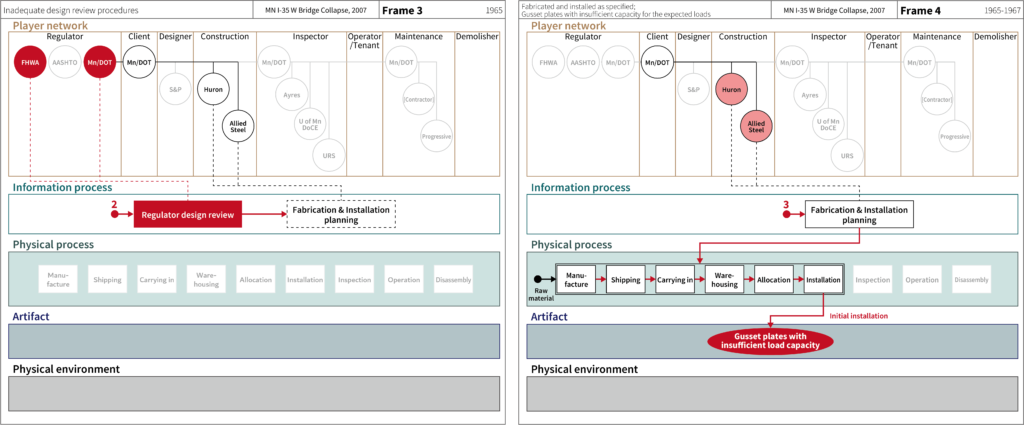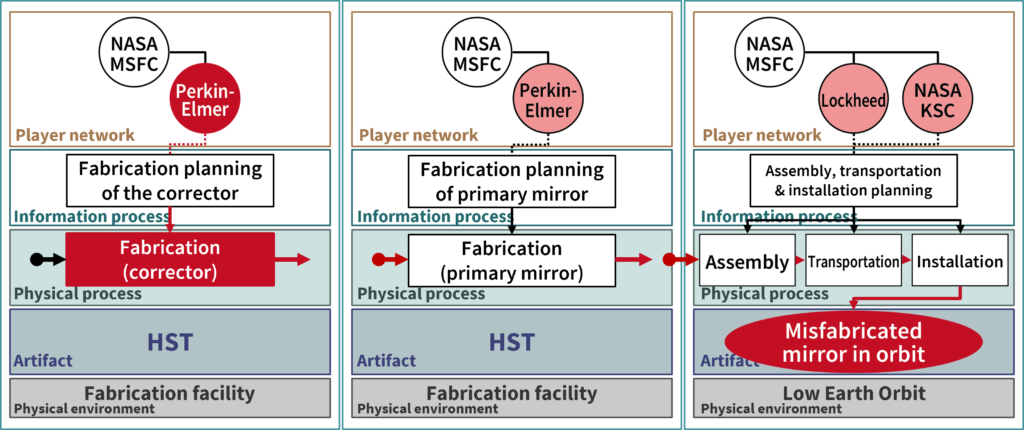- RESEARCH
- SYSTEM SAFETY | SYSTEMS ENGINEERING | AEROSPACE | CONSTRUCTION
- VRSS Lab | School of Aeronautics & Astronautics | Purdue University
Challenges in extraterrestrial construction
With the scope of human space exploration continuously expanding, one of the major milestones of space endeavors is to establish a settlement that can sustain human presence in an extraterrestrial environment, which demands building large and complex systems in outer space. However, we are still in the infant phase of gaining practical knowledge and experience in extraterrestrial construction, and we have only demonstrated limited capability of construction in space. Construction in space is no easy task, and even conventional construction on Earth is not, of course, immune to risks of failure.
Buildings, bridges, and other civil engineering structures on the ground that are shaping our built environment (Bartuska, 2011) are all products of construction—making or forming “by combining or arranging parts or elements” (Merriam-Webster)—which can be described as built systems (Hollnagel, 2014, p. 223) or constructed systems. Within the scope of this research, extraterrestrial constructed systems refer to extraterrestrial habitats—enclosed structures capable of accommodating human occupants either on the orbit or surface of other celestial bodies outside of Earth’s atmosphere, and their supporting infrastructure with capabilities including communication, energy, and transportation. In this context, a construction system can be defined as an organizational and technological system that produces constructed systems by fabricating and installing materials into an integrated structure according to design specifications.
Failures in construction systems due to embedded pathogens
Failures—non-performance or inability of a component (or system) to perform its intended function (Leveson, 2011)—in construction systems—processes of designing and building constructed systems—can lead to various consequences, including structural failures, dysfunctional building systems, and prohibitive cost for maintenance. One notion of such failures is that latent failures in one or more defective processes in the project materialize in the constructed system and remain unnoticed until eventually breaking out as an accident. Borrowing the analogy of resident pathogens based on an epidemiological notion of failures (Reason, 1990), we can describe latent failures as embedded pathogens carried in the physical artifact.
Looking upwards, construction in space will require renewed attention to failures due to embedded pathogens, as addressing them becomes exceedingly difficult and costly after launch, and it is easy to imagine even failures with relatively minor consequences on Earth leading to severe or catastrophic consequences if they occur in space. In such a treacherous environment, leveraging frameworks and methodologies for risk assessment and safety management becomes crucial for paving the way forward, as consequential failures could halt or even reverse the entire endeavor. Hence the research question: how might embedded pathogens end up in extraterrestrial constructed systems, and how can we prevent their outbreak in space?
Developing a model to describe construction system accidents
The primary objective of this research is to establish a framework for analyzing the mechanism of accidents—undesired and unplanned (but not necessarily unexpected) event[s] that result in (at least) a specified level of loss (Leveson, 1995)—in constructed systems due to embedded pathogens and learning how to prevent them, and to contribute to building a theoretical foundation for planning and designing extraterrestrial constructed systems with system safety. The framework has three major components: accident/failure information, accident model, and extracted learnings, which would then feed into the processes of planning and design.
References
- Bartuska, T. J. (2007) The Built Environment: Definition and Scope. In The Built Environment: A Collaborative Inquiry Into Design and Planning (pp. 3–13).
- Hollnagel, E. (2014) Resilience engineering and the built environment. Building Research and Information, 42(2), 221–228.
- Leveson, N. G. (2011) Engineering a Safer World. book. The MIT Press.
- Leveson, N. G. (1995) Safeware : System Safety and Computers. Boston: Addison-Wesley.
- Reason, J. (1990) The contribution of latent human failures to the breakdown of complex systems. Philosophical Transactions of the Royal Society of London. Series B, Biological Sciences, 327(1241), 475–484.


Related Publications
- Igarashi, T. and Marais, K. (Jun 2022) “Constrction system failures: Frame notation of project pathogens and their propagation across time and system hierarchy,” INCOSE 32nd Annual International Symposium, Detroit, MI. | Brian Mar Best Student Paper Award
- Igarashi, T. and Marais, K. (Jan 2022) “Modeling extraterrestrial construction system failures: Lessons learned and a framework based on terrestrial construction,” 2022 AIAA SciTech Forum, San Diego, CA.
- HEADER IMAGE | A set of specialized lenses being installed on the Hubble Space Telescope to correct the flawed main mirror in the telescope (NASA)

